Analysis of the world image of the sensor and its future development trend
The sensor is an extension of the human five senses, also known as electric five senses. In order to obtain information from the outside world, people must resort to the sensory organs. And by relying on people's own sensory organs, their functions in researching natural phenomena and laws and production activities are far from enough. To accommodate this situation, sensors are needed.
What is a sensor?
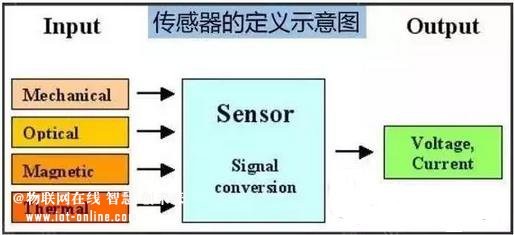
The sensor (English name: transducer/sensor) is a detection device that can sense the measured information and can transform the sensed information into an electrical signal or other required form of information output to meet the information. Requirements for transmission, processing, storage, display, recording, and control.
Sensor - the foundation of the Internet of Everything
Sensor technology, RFID tags, embedded system technology are the three key technologies to realize the Internet of Things!
Sensor classification
According to its basic sensing function, it can be divided into thermal sensor, photosensitive element, gas sensor, force sensor, magnetosensitive sensor, humidity sensor, sound sensor, radiation sensor, color sensor and taste sensor. class. The function of the sensor is often compared with the five major sensory organs of humans:
Pressure sensitive / temperature sensitive / fluid sensor - touch
Gas sensor - smell
Photosensitive sensor - vision
Sound sensitive sensor - hearing
Chemical sensor - taste
At present, there is no unified classification method for sensors, but the following are commonly used:
1. According to the measured physical quantity: such as: force, pressure, displacement, temperature, angle sensor, etc.;
2, according to the working principle of the sensor: such as: strain sensor, piezoelectric sensor, piezoresistive sensor, inductive sensor, capacitive sensor, photoelectric sensor, etc.;
3. According to the way the sensor converts energy:
(1) Energy conversion type: such as: piezoelectric type, thermocouple, photoelectric sensor, etc.;
(2) Energy control type: such as: resistive, inductive, Hall-type sensors and thermistors, photoresistors, humidity-sensitive resistors, etc.;
4. According to the working mechanism of the sensor:
(1) Structure type: such as: inductive, capacitive sensor, etc.;
(2) Physical properties: such as piezoelectric, photoelectric, various semiconductor sensors, etc.;
5. According to the form of the sensor output signal:
(1) Analog: The sensor output is an analog voltage;
(2) Digital: The sensor output is a digital quantity, such as an encoder type sensor.
6, according to the principle of energy conversion can be divided into:
(1) Active sensors: Active sensors convert non-electricity into electrical energy, such as electromotive force, charge sensors, etc.;
(2) Passive sensor: The passive program sensor does not have the energy conversion effect, but only converts the measured non-electricity into electrical parameters, such as resistive, inductive and capacitive glow sensors.
Global mainstream sensor manufacturer
At present, about 40 countries around the world are engaged in the research, production and application development of sensors, and more than 6,000 R&D institutions. Among them, the United States, Japan, Germany and other countries have strong strength, a wide range of products, and more than 20,000 kinds of products. The world's leading companies include Honeywell, Foxboro, Ndefok, Philips, Holland, Infineon, and Bell & Howell.
â–¼The world famous sensor manufacturers and product application areas

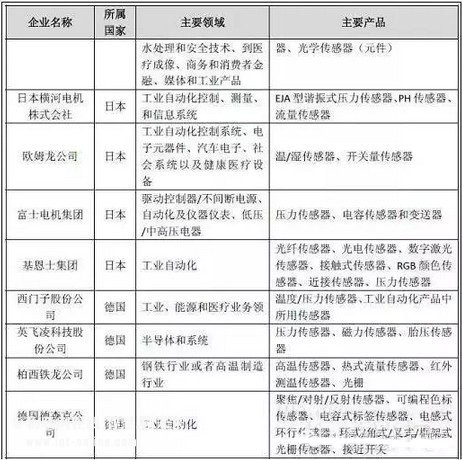
â–¼Main domestic sensor manufacturing company
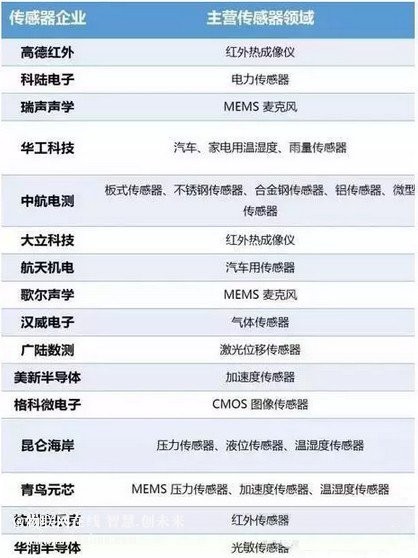
Global sensor market analysis
Market size analysis
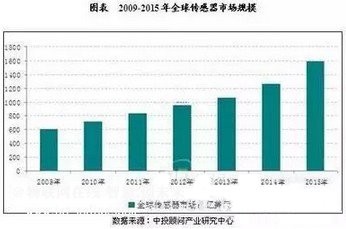
In recent years, the global sensor market has maintained rapid growth. In 2009 and 2010, the growth rate reached more than 20%. In 2011, due to the global economic downturn, the sensor market growth rate decreased by 5% compared with 2010, and the market size was 82.8 billion US dollars. With the gradual recovery of the global market, the global sensor market in 2012 has reached US$9.52 billion, and in 2013 it was approximately US$105.5 billion. As the economic environment continues to improve, the demand for sensors will continue to increase. In 2015, the market size reached approximately $150 billion.
Regional layout status
At present, from the overall situation of the world, a few economically developed countries such as the United States and Japan occupy more than 70% of the sensor market, and the share of developing countries is relatively small. Among them, the three largest markets in the market are the United States, Japan and Germany, which accounted for 29.0%, 19.5%, and 11.3% of the total market share of sensors. In the future, as the economies of developing countries such as China, India, and Brazil continue to grow, the demand for sensors will increase substantially. However, developed countries have advantages in technology and brand in the sensor field. This advantage will remain in the next few years. Therefore, the global sensor market distribution will not be significantly changed.
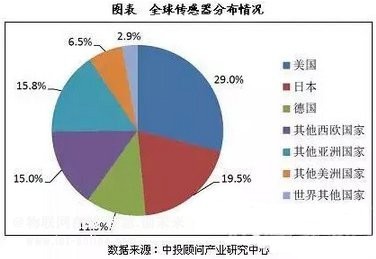
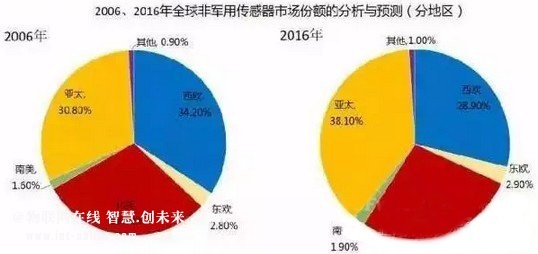
Domestic sensor market size
There are more than 1,700 companies engaged in the production and research and development of sensors in China, among which more than 50 are engaged in the research and production of microsystems. At the same time, sensors are increasingly being applied to all areas of social development and human life. Such as industrial automation, agricultural modernization, aerospace technology, military engineering, robotics, resource development, marine exploration, environmental monitoring, security, medical diagnosis, transportation, household appliances, etc.
Establishment of three major sensor production bases
At present, there are three major sensor production bases in China, namely: Anhui base, which is mainly to establish a strong and sensitive scale economy; Shaanxi Province sensitive technology industry group company, mainly to establish voltage sensitive, heat sensitive, automotive electronics economies of scale as the main target; Heilongjiang The base mainly establishes the gas and humidity sensitive economies of scale as the main target.
Sensor industry geographical pattern
China's sensor manufacturers are mainly concentrated in the Yangtze River Delta region, and gradually form a regional spatial layout dominated by central cities such as Beijing, Shanghai, Nanjing, Shenzhen, Shenyang and Xi'an.
Yangtze River Delta region: centered on Shanghai, Wuxi and Nanjing. It has gradually formed a relatively complete sensor production system and industrial support including heat sensitivity, magnetic sensitivity, image, weighing, photoelectric, temperature and gas sensitivity.
Pearl River Delta region: mainly in the central city of Shenzhen. The sensor industry system consisting of thermal, magnetic, ultrasonic and weighing is composed of foreign-funded enterprises in small and medium-sized cities nearby.
Northeast China: Shenyang, Changchun and Harbin. It mainly produces MEMS force sensitive sensors, gas sensors and humidity sensors.
Beijing-Tianjin area: mainly based on universities. Engaged in the research and development of new sensors, filling the domestic gap in some areas. Beijing has established a national micro/nano laboratory.
Central region: Zhengzhou, Wuhan, Taiyuan. The close combination of production, study and research has developed well in industries such as PTC/NTC thermistors, inductive digital liquid level sensors and gas sensors.
In addition, the sensor industry is accompanied by the rise of the Internet of Things, and has developed rapidly in other regions such as Shaanxi, Sichuan and Shandong.
Sensor future development trend
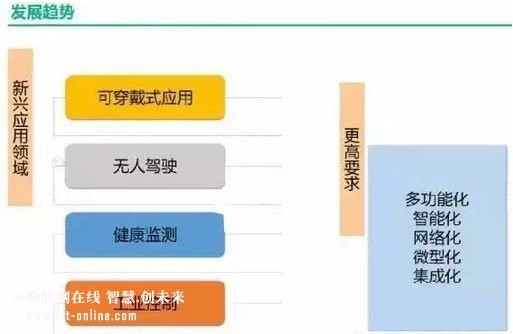
Future ADAS technology and smart car development will drive the rapid growth of the sensor market
The sensor is the unmanned basic hardware and the carrier of the sensing environment.
According to Boston Consulting, the market value created by driverless cars will reach 42 billion US dollars.
By 2035, there will be 18 million cars in the world with some drone driving functions, 12 million cars will become completely unmanned cars, and China will be the largest smart car market.
Google's driverless sensors include laser radar, camera, millimeter radar, ultrasonic and inertial measurement units, etc.
In the era of the Internet of Things, sensors are ushered in
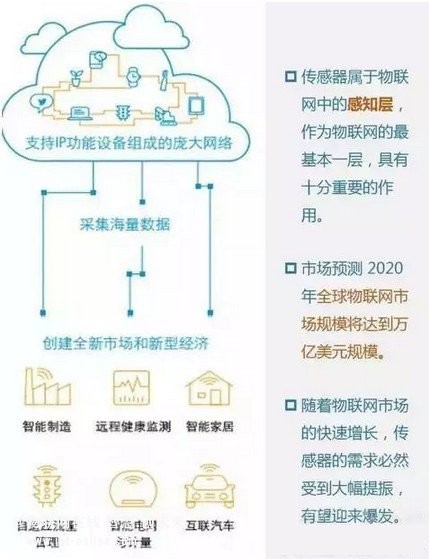
Summary: Sensor features include miniaturization, digitization, intelligence, multi-function, systematization, and networking. It is the first step in achieving automatic detection and automatic control. The existence and development of the sensor allows the object to have senses such as touch, taste and smell, and let the object slowly become alive. Therefore, in the era of the Internet of Things, it is extremely important to understand the knowledge and development trend of sensors.
- The Loose Setting Powder helps expertly set freshly applied makeup so it adheres to skin for hours. The universally flattering banana tint tones down any red or pink blotchiness while neutralizing blue under-eye circles.
- Packed with high-quality ingredients, the Banana Loose Setting Powder is vegan, cruelty free and gluten free for peace of mind. Cosmetics with a conscience give modern makeup a beautiful new dimension.
- Simple step-by-step instructions make for fool-proof application. The perfect amount of powder creates makeup that sticks without treading into cakey territory.
- The setting powder comes with a luxurious velour puff for easy travel and major payoff. It can be your constant companion for midday touch-ups and absorbing excess oil on-the-fly.
- All that hard work you put into perfecting your foundation and base makeup is made to last. A dose of setting powder means it stays.
-
Loose Setting Powder, Face Powder Makeup & Finishing Powder for Light, Medium & Tan Skin Tones, Mattifying Finish and Shine
- Loose Finishing Powder: It's a miracle in a jar; This 100 percent pure mineral silica finishing powder is perfect for absorbing oil, setting your makeup, or wearing alone for a blurred matte finish
- sheer Coverage: Its ultra sheer, white loose powder formula goes on neutral, allowing it to work on all skin tones; Remember to use this finishing powder lightly, because a little bit goes a long way
Best Loose Powder,Loose Powder Foundation,Airspun Setting Powder,Best Loose Powder For Oily Skin,Loose Setting Powder
Guangzhou Vast Internation Trade Co.,Ltd , https://www.tintsfeast.com